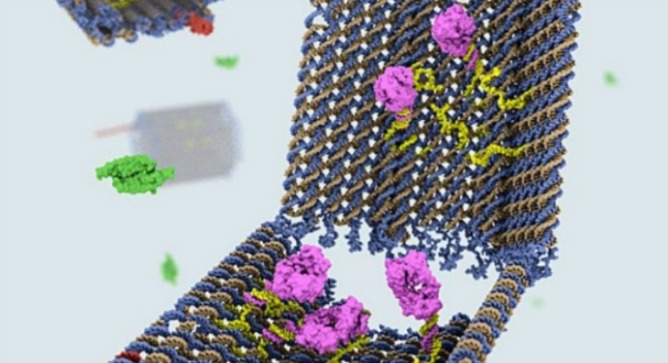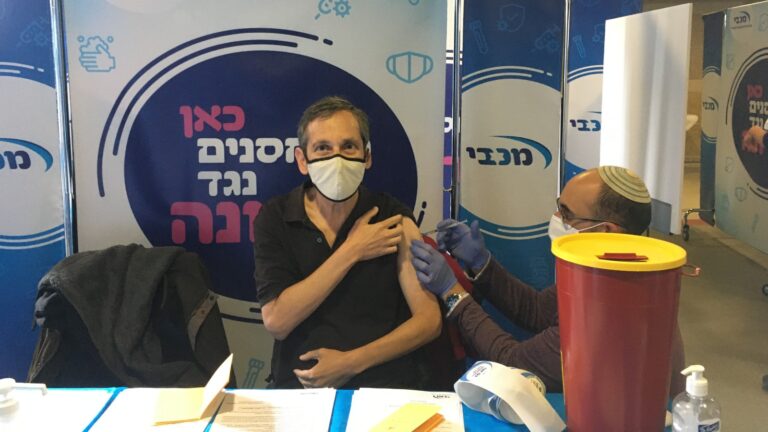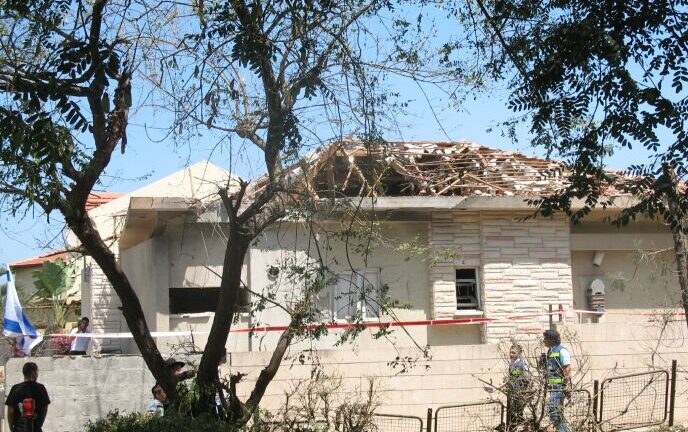Origami, the Japanese art of paper folding, is thousands of years old. DNA origami, the science of folding genetic material, was invented only in 2006. Ido Bachelet, an Israeli structural and computational biologist, is one of the few people in the world who’s an expert at this.
But he’s not folding DNA strands into pretty cranes and butterflies. As he explains in a Nature video with his Harvard research partner Shawn Douglas, Bachelet’s microscopic structures could perform many useful medical tasks.
Spread the Word
• Email this article to friends or colleagues
• Share this article on Facebook or Twitter
• Write about and link to this article on your blog
• Local relevancy? Send this article to your local press
Their barrel-shaped DNA nano-robot (“nanobot”) is produced by meticulously folding strands of DNA and visualizing the folded shapes under an electron microscope. The mouth of the barrel is shut with latches and hinges also made of DNA, which is an exceptionally stable and versatile material. The latches are programmed to unlock only when the nanobot comes in contact with the right “key” – specific biomarkers on the surface of cells.
“The goal of the robot is to act like a truck, carrying cargo from point A to point B,” says Bachelet.
One load they could deliver is chemotherapy drugs. When they encounter surface biomarkers for the cancer they’re programmed to target, the latches open — unleashing the therapeutic cargo. Normal cells are unaffected.
“It’s a very cool topic,” Bachelet tells ISRAEL21c from his lab at Bar-Ilan University, where he is a senior lecturer at the Faculty of Life Sciences and the Institute of Nanotechnology and Advanced Materials. “You can encode a lot of things in DNA. It can compute numbers, recognize molecular targets, perform work like a motor, act like an enzyme. So why not integrate all these functions into one structure?”
With a background in therapeutics and molecular design honed at the Hebrew University of Jerusalem and the Massachusetts Institute of Technology (MIT), Bachelet started thinking about this idea shortly before joining Douglas at Harvard’s prestigious Church Lab for his post-doctoral studies in December 2009.
DNA origami had been innovated at the California Institute of Technology (Cal Tech) in Pasadena just three years before. Nobody had described a feasible way of turning it into a therapeutic tool.
He and Douglas, a biophysicist and computer scientist, experimented successfully with six different “locks” and six corresponding cancer cell lines in a test tube. They also tested payloads that activate the immune system. Their initial findings were published in a February 2012 issue of Science magazine. Over the past six months, Bachelet has started moving into animal studies by injecting the DNA nanorobots into lab insects at Bar-Ilan, and he is nearly ready to submit his further findings for publication.
Cargo in, cargo out
Working with DNA is kind of like sewing a garment on a nano level.
“DNA origami enables us to fold any shape we want from DNA,” Bachelet explains. “To optimize the manufacturing process we stabilize the structure with DNA accessories like pins, which we remove when the structure is complete.”
Because “cargo” loading is accomplished by free diffusion in and out of the DNA barrel, the tiny structure can be programmed not only to deliver a load but also to pick one up and take it somewhere else.
Potential applications in medical diagnostics and therapeutics alone have several potential developers in Israel and in the United States eager to commercialize the invention.
“How it develops depends where people want to take it,” says Bachelet. “We started the lab six months ago, and we are still researching the mechanism, doing tricks with it to try to improve it. This will require an unusual model of investment or commercialization because it’s a totally new category with very unique technical challenges.”
Paul Rothemund, inventor of DNA origami, has said that Bachelet and Douglas’ work “takes us one more step along the path from the smartest drugs of today to the kind of medical nanobots we might imagine” for tomorrow.

















